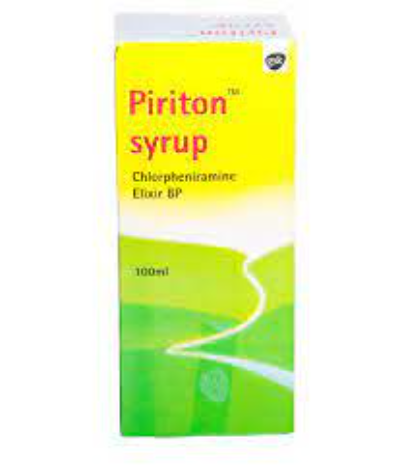


<2 years: Safety & efficacy not established
2-6 years: 1 mg PO q4-6hr; not to exceed 6 mg/day
6-12 years: 2 mg PO q4-6hr; not to exceed 12 mg/day or sustained release HS
Varies in incidence & severity with the individual drug; also individual patients vary in susceptibility
CNS depression
Drowsiness
Sedation ranging from mild drowsiness to deep sleep (most frequent)
Dizziness
Lassitude
Disturbed coordination
Muscular weakness
Restlessness, insomnia, tremors, euphoria, nervousness, delirium, palpitation, seizures is less common
Epigastric distress
Anorexia
Nausea
Vomiting
Diarrhea
Constipation
Cholestasis, hepatitis, hepatic failure, hepatic function abnormality, jaundice is rare
Tachycardia, palpitation ECG changes (eg, widened QRS)
Arrhythmias (eg, extrasystole, heart block)
Hypotension
Hypertension
Dizziness, sedation, and hypotension may occur in geriatric patients
Dryness of mouth, nose, and throat
Dysuria
Urinary retention
Impotence
Vertigo
Visual disturbances
Blurred vision
Diplopia; tinnitus
Acute labyrinthitis
Insomnia
Tremors
Nervousness
Irritability
Facial dyskinesia
Tightness of the chest
Thickening of bronchial secretions
Wheezing
Nasal stuffiness
Sweating
Chills
Early menses
Toxic psychosis
Headache
Faintness
Paresthesia
Agranulocytosis
Hemolytic anemia
Leukopenia
Thrombocytopenia
Pancytopenia
Documented hypersensitivity
Lower respiratory disease, eg, asthma (controversial)
Preemies & neonates
Nursing women
Acute asthma, sleep apnea
Caution in narrow angle glaucoma, prostatic hypertrophy, stenosing peptic ulcer, pyloroduodenal obstruction, or bladder neck obstruction
Chlor Trimeton non-drowsy contains no chlorpheniramine, only pseudoephedrine
Antihistamine exposure in first trimester not reported to be associated with increased risk of malformations; animal studies not reported; there are no controlled data in human pregnancy; only recommended for use during pregnancy when benefit outweighs risk
Excretion into human milk; the manufacturer recommends that caution be used when administering chlorpheniramine to nursing women; infants should be monitored for irritability or drowsiness; antihistamines may temporarily decrease maternal serum prolactin concentrations when administered prior to nursing infant for the first time
A: Generally acceptable. Controlled studies in pregnant women show no evidence of fetal risk.
B: May be acceptable. Either animal studies show no risk but human studies not available or animal studies showed minor risks and human studies done and showed no risk.C: Use with caution if benefits outweigh risks. Animal studies show risk and human studies not available or neither animal nor human studies done.
D: Use in LIFE-THREATENING emergencies when no safer drug available. Positive evidence of human fetal risk.
X: Do not use in pregnancy. Risks involved outweigh potential benefits. Safer alternatives exist.
Histamine H1-receptor antagonist in blood vessels, respiratory tract, and gastrointestinal tract
Half-Life elimination: 10-13 hr (children); 14-24hr (adult)
Duration: 24 hr
Peak Plasma Time: 2-3 hr (range 1-6 hr)
Protein Bound: 29-37%
Vd: 4-7 L/kg (children); 6-12 L/kg (adults)
Metabolism: Liver (CYP2D6)
Metabolites: Monodesmethylchlorpheniramine, didesmethylchlorpheniramine
Excretion: Urine
Sedative effect: Low
Antihistamine activity: Moderate
Anticholinergic acitivity: Moderate